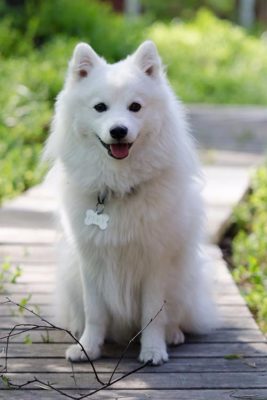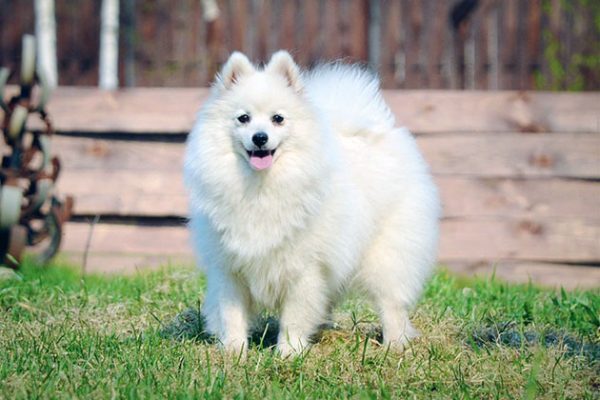Japanese Spitz

Japanese Spitzes are very active and playful; long walks with intellectual and physical activity go to their benefit. Representatives of this breed are sociable – from an early age, they like to spend time in the company of other animals and people. If you are looking for a four-legged friend and companion, the Spitz is an ideal choice.
Table of Contents
Breed Information
| Another Name | Nihon Supittsu |
| Origin | Japan |
| Height | Males 34-37 cm Females 30-34 cm |
| Weight | 5-7 kg |
| Fur | Medium |
| Color | White |
| Lifespan | 12-15 years |
| FCI Classification | Spitz and primitive types |
| Group | Small breed or decorative dogs, dogs for children, dogs for the apartment |
| Price | From $1000 |
Breed Photos
Origin History
The Japanese Spitz is an artificially bred breed. Its ancestor is considered to be the German Spitz, which was brought to Japan in those years. Residents of Tokyo, wherein the 30s of XX century this dog was first shown at the exhibition, were shocked by the white fluffy pet. He became a real favorite, so local breeders decided to breed the same dog. Dog breeders crossed several types of representatives of this class, adding genes of Australian, Canadian, and German spitz-like dogs.
After Japan, the breed became known in Sweden, and then the dogs appeared and quickly gained popularity in America and European countries. The main standard of the breed, still in use today, appeared in the 40s. The Japanese Spitz is still not recognized by the American Kennel Club because it is very similar to the American Eskimo Spitz. Their similarity is evident not only in appearance but also in character.
Appearance
The Japanese Spitz is a small dog, good for keeping in an apartment because of its compact size. Representatives of the breed on short legs are covered with thick white hair of medium length. The muzzle is small, wedge-shaped, slightly expanding to the back of the head. The dog has black eyes and pointed ears. The tail of the Japanese Spitz is curled up. Height at the withers does not exceed 40 cm, and the maximum weight – 7 kg. The only white coloring is allowed.
Character
Japanese Spitzes are very active and playful; long walks with intellectual and physical activity go to their benefit. Representatives of this breed are sociable – from an early age, they like to spend time in the company of other animals and people. If you are looking for a four-legged friend and companion, the Spitz is an ideal choice. Pets are devoted to their owners till the end of their lives.
Spitzes love attention, so you need to spend a lot of time with them, so they don’t feel abandoned. Separation from the owner is the biggest stress for a dog. That is why it is recommended to take your pet with you on vacation or even on a business trip. Otherwise, little Spitzes have a decreased appetite, whimpering, and longing.
Care
Despite the snow-white coloration, there are no problems with care. Spitzes have a unique hair structure, making them sufficient to shake off the dust after a walk. Therefore, the pet should be bathed once in 1.5 months. But you have to comb out the hair almost every day. Use a special brush for this.
Pay special attention to your dog’s eyes and ears and remove dirt in time. When walking in winter, you should wear an insulated coat and, in rainy weather, a waterproof one. Once every three months, remember to trim his claws. Please note Spitz’s eyes, as it is not uncommon for a breed to get runny from the wind outside. It may cause furrows to appear around the eyes. If this happens, wipe them with a damp cloth.
Training
As with any breed, early socialization is important. Train your puppy to socialize with animals and people, and make him familiar with the sounds of nature. Set boundaries right away; otherwise, the Spitz can be naughty when you’re not home. Show a commanding attitude, so your dog understands that there is only one leader in the house – man.
Be firm in your training, and don’t let your behavior go unpunished. Be sensitive to the line between toughness and aggression to avoid damaging your puppy’s psyche. Don’t forget to praise your dog for his achievements, as this will help you build on the results.
Japanese spitzes are easy to train, but they react differently to strangers. Some representatives bark at passing people or passing cyclists and some are oriented to the owner’s behavior.
Classes with “Japanese” aimed at concentration and attention should be carried out gradually, regularly, and for a short time. Dogs do not like a prolonged intellectual strain.
Common Diseases
With proper care, the Japanese Spitz keeps in good health, and visits to the vet are quite a rare occurrence. Here is a list of common ailments of this breed:
- allergies (there is a runny nose, less often – tearfulness of the eyes);
- dislocation of the knee joint;
- hip dysplasia.
Nutrition
Your dog’s health depends primarily on nutrition. Make sure that the dog gets vitamins and useful microelements together with the food. Japanese Spitzes eat well both natural food and ready-made special food.
Pay attention to the condition of his coat and claws. If they don’t look very healthy, it means he is deficient in micronutrients. Change his diet by adding more vitamin-rich foods.
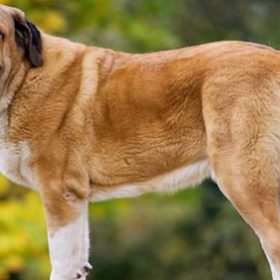 Spanish Mastiff
Spanish Mastiff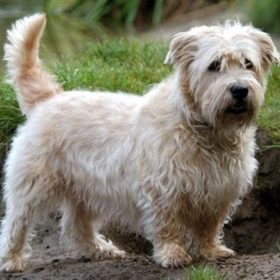 Glen of Imaal Terrier
Glen of Imaal Terrier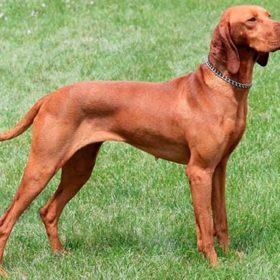 Vizsla
Vizsla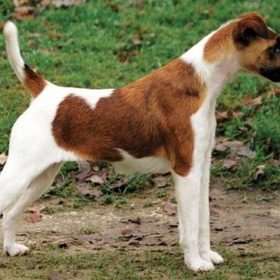 Smooth Fox Terrier
Smooth Fox Terrier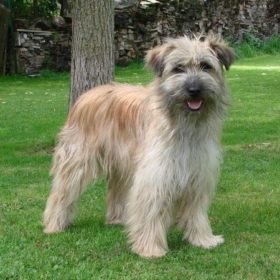 Pyrenean Sheepdog
Pyrenean Sheepdog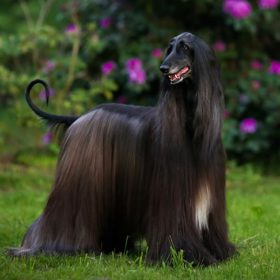 Afghan Hound
Afghan Hound